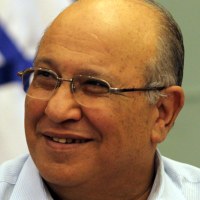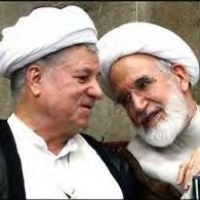![]()
Wed, Jan 11, 2011

The bombed car of Mostafa Ahmadi Roshan, a director at the Natanz uranium enrichment plant. (Photo: KeystoneUSA-ZUMA/Rex Features)
Iranian Nuclear Scientist Assassinated in Tehran
A DebkaFile report: “Senior Natanz executive slain in Tehran, US Navy, Air Force on Hormuz readiness”.
Forty-eight hours after Iran began advanced uranium enrichment in the fortified Fordo bunker near Tehran, Prof. Mostafa Ahmadi-Roshan, deputy director of the first uranium enrichment facility at Natanz, was killed early Wednesday, Jan. 11 by a sticky bomb planted on his car by two motorcyclists. It exploded near the Sharif technological university in northern Tehran.
The pair made their escape. Prof. Ahmadi-Roshan was the fourth Iranian nuclear scientist to be mysteriously assassinated in Tehran in two years. The same method of operation was used in a similar operation last year. Iran has blamed them all on Israel.
Tuesday, President Barack Obama received the Saudi foreign minister Saud al-Faisal. Their conversation was shrouded in secrecy, although no one doubts it focused on the conflict with Iran and the urgency of keeping open the main export outlet for the world’s biggest oil suppliers, Saudi Arabia and the Gulf, through the Strait of Hormuz. The crisis in Syria must also have featured in their talks.
Shortly before the Saudi minister’s arrival, US Navy and Air Force chiefs shed some light on preparations for an imminent operation to keep the Strait of Hormuz open to international shipping.
DEBKAfile’s Washington sources report that the White House is bending over backwards to convince the skeptical Saudis that the president is wiling to use military force to keep the vital waterway open, safeguard Gulf oil installations and exports and also prevent Iran from acquiring a nuclear weapon.
The armed forces chiefs’ disclosures were integral to the White House effort.
US Navy Commander Adm. Jonathan Greenert said preparations for a clash in the Strait of Hormuz (between the US and Iran) were keeping him up at night. The US Admiral added: “If you’re asking me why I’m not sleeping at night, it’s because of the Strait of Hormuz and what’s happening in the Arabian (Persian) Gulf. I’m an organizer, a trainer and equipper. I’d make sure that our people have the right equipment to do the right thing. Our folks that transit in and around that area, I want to make sure that they’re able to (deal) with the things that they need to deal with, basically self-protection, counter-swarm, ASW-anti-submarine warfare.”
Air Force Commander General Norton Schwartz said that the US air force will obviously play a role in keeping the Strait of Hormuz open.
A few days earlier, on Jan. 8, Gen. Martin Dempsey, Chairman of the Joint US Chiefs of Staff, acknowledged that Iran could close the Strait of Hormuz for a period of time, but that if it did so the US would take action to reopen the Strait.
The US has therefore made clear that it is resolved to bring all its naval and air power to bear on ensuring that the Strait of Hormuz remains open.
Riyadh, for its part, has promised to make up any shortfalls in oil sales generated by Western sanctions against Iran as its contribution to Washington’s campaign to convince Asian buyers such as India, Japan, China and South Korea to cut down on their purchases from Iran.
This pledge is not entirely plain sailing. It raises the question of how quickly Saudi Arabia can up its oil production. The expert assessment is six to nine months at least. Then there is the counter-threat from Tehran: If the US continues to lean on European and Asian governments for an embargo on Iranian oil, “not a single drop” of Saudi or Gulf oil will pass through the Strait of Hormuz, say Iranian officials, thus pitting an Iranian blockade against a Western-led oil embargo.
Many Western experts treat Tehran’s threat as empty rhetoric arguing that closure of the vital strait would above all impact Iran’s own oil exports and slash its main source of revenue.
But DEBKAfile’s Iranian sources report that Tehran is thinking in terms of a partial and selective closure of the Strait of Hormuz — rather than full-blown military action — in the certainty that the US and West will not attack Iranian oil tankers or even detain them. Partial action, the Iranians believe, will be enough to trigger a major spike in world oil prices, send insurance rates for oil tankers sky high and bring the world’s energy markets under intolerable pressure.
Two years ago, a Revolutionary Guards speedboat from the island of Abu Musa in the northern outlet of Hormuz damaged the Japanese oil tanker Star M carrying oil from Saudi Arabia by firing a single missile.
Washington opted to keep the findings of its inquiry under wraps so as to keep down tensions around the Gulf export route, avoid exacerbating relations with Tehran and keep a cap on oil prices.
The British newspaper The Guardian published a timeline of attacks on people linked to Iran’s nuclear program. The Bomb blast that killed Iranian professor Mostafa Ahmadi-Roshan is the latest in a series of attacks.
— Mostafa Ahmadi Roshan, 32, a chemistry expert and a director of the Natanz uranium enrichment plant in central Iran, dies after two assailants on a motorcycle attach magnetic bombs to his car. (11 January, 2012)
— At least seven people are killed in a blast at a steel mill linked to Iran’s nuclear programme in the city of Yasd. (11 December, 2011)
— Mysterious explosion heard at nuclear facilities in Isfahan. Satellite picture later appears to confirm blast. (28 November, 2011)
— A Revolutionary Guard commander, a key figure in Iran’s missile programme, and 16 others die in an explosion at an ammunition depot near Tehran. The Revolutionary Guard call it an accident despite speculation Israel was responsible. (12 November, 2011)
— Scientist Darioush Rezaeinejad, 35, shot dead by gunmen in eastern Tehran. Iranian authorities give conflicting versions about his involvement or otherwise in the country’s nuclear programme. (23 July, 2011)
— Majid Shahriari, a senior Iranian nuclear scientist, is killed when a bomb is attached to his car by a motorcylist in northern Tehran. In a separate attack, Fereydoun Abbasi-Davani, a 52-year-old nuclear scientist working for Iran’s defence ministry, escapes, though wounded. (29 November, 2010)
— Particle physicist Masoud Alimohammadi is killed on his way to work by a bomb strapped to a motorcycle in north Tehran. (12 January, 2010)



 RSS
RSS










Iranian Nuclear Scientist Assassinated in Tehran | Middle East, Israel, Arab World, Southwest Asia,. http://t.co/vCwYqMM6
Iranian Nuclear Scientist Assassinated in Tehran | Middle East, Israel, Arab World, Southwest Asia,. http://t.co/vCwYqMM6
[…] fueling the war scare, two helmeted bombers on a motorbike assassinated the Iranian nuclear scientist Mostafa Ahmadi-Roshan, deputy director of the Natanz uranium […]